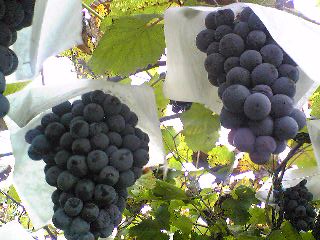GUIDES
Candy Fruit: Muscatels
01 Aug 2013 07.42 am by K. Daniel

Participating in the weekly outing that is often referred to as grocery shopping is one of the few activities that I take pleasure in. It is a fun activity that involves me, the average consumer, going around and taking in all the sights, smells, and the hustle and bustle of the markets.
Fresh produce is abundant. Fruits and vegetables in all shapes and sizes, unique varieties, both locally produced and imported from overseas. The cooler boasted a good range of meats such as lamb, beef, chicken, turkey, and even kangaroo, all in various cuts and joints for roasting, braising, or chargrilling. The deli section offered cured meats and cheeses which takes me back to my youth, when dad used to cut off slices of Edam cheese after the family dinner, sometimes in the accompaniment of a glass of red (him, not me).
"Amazing what you can see in the local supermarket" is what I thought. Yes, supermarket. Not a farmer's market, or a weekend open air market, just a normal, honest to goodness, supermarket chain. Have i mentioned how much i enjoy grocery shopping?
As I continued on browsing while reminiscing (and plan for whatever substance that I can whip up and call "dinner"), a section in the corner of the fruit and veg store caught my eye. It mentioned sale, $3.99/kg. The bin boasted small glistening fruits reminiscent of black pearls. At that moment, I knew immediately I had to get some of those.
After bringing home the bounty, much like how early cavemen came back from the hunt, I proceeded to store all my purchases where they should be. Most of the goods were aptly shoved in the fridge.
During the night, when the jewel-like bunches have become appreciably chilled, I began to take a small hand full and started munching. Sweet! Incredibly sweet in fact, that I started thinking what I could pair them up with to cut the honey-like quality. Yoghurt was an obvious contender, and I had some handy in the fridge, so I've dolloped them on the bowl.
Never have I eaten grapes these sweet, but then again, I knew that these were no ordinary grapes. These are muscat grapes, also known and sometimes sold as muscatels, a variety of the common grape vine (Vitis vinifera). Not to be confused with the muscadine grapes native to the South Eastern United States (Vitis rotundifolia); muscat grapes are grown and available worldwide. I thought that these were indeed special because muscat grapes are not usually eaten as table grapes, more often used for winemaking instead where the high sugar content is fermented by yeast to produce alcohol. I would be lying if I said I was not inspired to make some homebrew after eating them (I didn't).
Texture wise, these were different from the normal table grapes that we often get. Instead of being crunchy like some of the larger grape varieties, these were more bursting with juices, like little sugar bombs with soft flesh. The skin was slightly thicker and tougher than table grapes as well, but it was expected. The skin is a source of a chemical group known as Tannins, which give red wine its distinctive colour, and imparts the dry mouth feel you sometimes experience after drinking a glass of red.
Some table grapes such as red globe were bred to have thinner skin, which gives the consumer a more pleasurable eating experience as they won't have to nibble on skin for long. These are also not to be confused with what is termed "slip-skin" varieties of grapes whose leathery skins separate from the flesh easily and the skin rarely eaten.These treasures are on a different league altogether. The first (and only) time i've experienced them was when an auntie brought back a batch after her trip to Japan where they are more common.
Grape ripeness depends on the variety that you are dealing with, some turn black-blue, some remain green, while others turn red. One variety, the Swenson Red Grape, actually changes colour depending on the climate. In cooler weather when ripe it turns blue, whereas in warmer temperatures it remains a more translucent green colour. The muscatel variety of the common grape vine is also highly varied, with black, blue, brown, yellow and green varieties existing. In saying that, it is important to be aware of the type and variety of the muscat grape that you are dealing with in order to determine quality.
The variety I purchased from the store on that day was of the black muscat variety, and as such, the most obvious visual cue for ripeness was colour. Generally, unripe grapes of the darker coloured varieties are a vegetal green colour when unripe and progressively darken. Perhaps similarly as well, green or white grapes develop a more translucent coloration than the solid green colour when it is unripe although this is not always the case across the board. Usually commercial practices call for a refractometre, a nifty device that measures sugar content in fruits. When the fruit hits a specific level, then it is harvested.
Another technique, although low tech but still reliable, is to feel the texture of the fruit. Hard, solid grapes bad (unripe), softer, yielding fruits good. Taste is also another obvious method; unripe grapes tend to be sourer, mouth-drying astringent, and not as sweet.
As of writing this article, I still have a small bunch full of these candy-like jewels in the fridge, ready to be devoured at any moment. It's the simple things that make life great, and the food adventures I've gained from shopping continuously ensures a steady stream of new things to try. I shall be on the lookout for more muscatel grapes (and other oddities) when I finish my first batch.
Copyright © Allripe 2012 - 2024 ® Allripe Pty Ltd